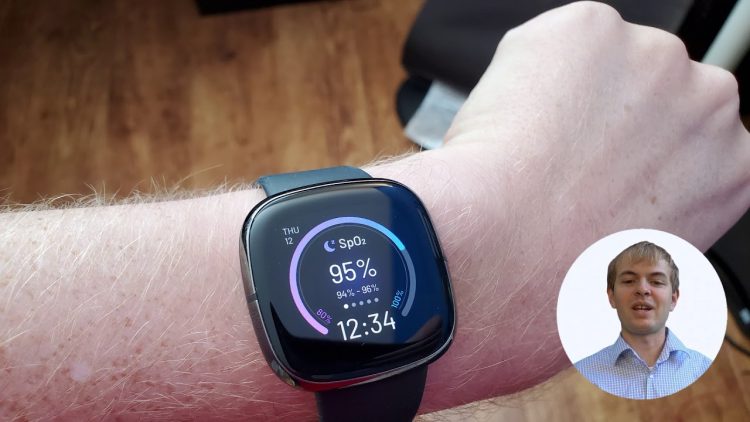Introduction: The Intersection of Technology and Wellness
In an era where technology permeates almost every aspect of our lives, wearable devices like smartwatches have evolved from mere fashion accessories to powerful tools for tracking and improving our health. With features ranging from heart rate monitors to stress tracking, these gadgets promise to help us lead healthier, more informed lives. But do they truly make us healthier—or do they simply add another layer of anxiety in an already overstimulated world?
As smartwatches become increasingly popular, we need to explore whether their benefits outweigh the potential psychological costs. This article takes a deep dive into how these devices affect our well-being, providing insight into both the positive and negative aspects of this wearable tech.
The Health Benefits of Smartwatches: Monitoring, Motivation, and Prevention
1. Real-time Health Monitoring
The primary appeal of smartwatches lies in their ability to provide continuous, real-time health data. Features like heart rate monitoring, ECG readings, blood oxygen levels, and even sleep tracking offer a deeper understanding of your body’s inner workings. For many users, these features translate into early detection of potential health issues, including arrhythmias, irregular heartbeats, and even stress levels.
Heart Rate Monitoring: Many smartwatches come equipped with heart rate sensors that measure how fast your heart is beating in real-time. This is particularly helpful for individuals with cardiovascular conditions or those looking to improve fitness. Monitoring your heart rate during exercise helps you stay in the optimal heart rate zone for fat burning, cardiovascular endurance, or muscle development.
ECG and Blood Oxygen Levels: Advanced smartwatches like the Apple Watch Series 7 or 8 offer electrocardiogram (ECG) functionality that can detect signs of atrial fibrillation (AFib), a condition that increases the risk of stroke. Additionally, blood oxygen sensors (SpO2) monitor oxygen saturation levels, which can provide early signs of respiratory issues like COVID-19 or sleep apnea.
2. Motivation and Accountability
-Reviewer-Photo-SOURCE-Adrienne-So.jpg)
A major factor in achieving health goals is motivation, and smartwatches excel in providing that push. The “gamification” of health tracking—through achievement badges, goal setting, and reminders—encourages users to move more, drink more water, and improve their overall lifestyle. Many smartwatches feature step counters, calorie tracking, and sleep cycle monitoring that help you stay accountable to your fitness goals.
Activity Rings and Challenges: For instance, the Apple Watch uses activity rings that visually track your daily exercise, movement, and standing goals. Completing rings becomes a satisfying experience, pushing users to keep moving even when they’re feeling sluggish.
Sleep Tracking and Recovery: Smartwatches also track sleep patterns, providing insights into the quality of rest you’re getting. Good sleep is essential for recovery, cognitive function, and immune health. The data can be a wake-up call for individuals who underestimate the importance of sleep, prompting them to adjust their routines for better health outcomes.
3. Prevention and Early Diagnosis
Preventive healthcare is an area where smartwatches show great promise. The continuous data they gather can potentially catch problems before they become major health issues. Regular tracking of heart rate, physical activity, and sleep can identify patterns that point to early signs of health problems, allowing for timely medical interventions.
Some devices are already offering early-warning systems for serious conditions like heart disease and diabetes. The FDA-approved Fitbit ECG feature, for example, can detect AFib early and alert the wearer to see a doctor, potentially saving lives in the process.
The Anxiety Paradox: Is the Smartwatch Helping or Hurting Your Mental Health?
1. Data Overload and Obsessive Tracking
While smartwatches promise a wealth of useful data, they also have the potential to overwhelm users. The constant influx of notifications, reminders, and data points can be anxiety-inducing, especially for individuals prone to obsessive behavior. With daily reports on steps, calories, exercise intensity, and sleep, it can be easy to become fixated on numbers rather than focusing on overall well-being.
The “Quantified Self” Dilemma: The movement toward the “quantified self” has created a culture of constant monitoring. While tracking personal health metrics can be helpful, it can also lead to a phenomenon known as “health anxiety”—where individuals become overly focused on small fluctuations in data, interpreting them as signs of illness or danger.
2. The Pressure to Meet Goals
Smartwatches are designed to keep you on track with your health goals. However, for some users, this constant pressure to meet goals can have negative mental health effects. Instead of feeling empowered by the reminders to exercise or achieve step counts, some individuals find themselves stressing over their inability to hit targets, creating unnecessary pressure and feelings of inadequacy.
Stress from Unmet Goals: In one study, participants who focused on meeting fitness targets on their smartwatches exhibited higher levels of stress when they didn’t achieve their goals. This pressure to meet goals, especially when combined with continuous tracking, can undermine the very sense of well-being the device is meant to promote.
3. Social Comparison and the ‘Fear of Missing Out’ (FOMO)
Smartwatches often come with features that allow users to share their progress with friends and social networks. While this can create a sense of community and support, it can also lead to unhealthy comparisons. Seeing others surpass your activity goals or hit milestones you haven’t reached yet can induce feelings of inadequacy and guilt.
This phenomenon, often referred to as “social comparison,” has been linked to negative mental health outcomes like anxiety and depression. The rise of “fitness influencers” showcasing their achievements on social media platforms adds another layer of pressure, especially for users who are already struggling with their own fitness journey.
Striking the Right Balance: How to Make Smartwatches Work for You
1. Use the Data, Don’t Obsess Over It

One of the key strategies to avoid the anxiety trap is to use the data provided by your smartwatch as a tool, not a crutch. Setting healthy goals based on real, actionable data is important—but it’s equally important to avoid becoming overly fixated on the numbers.
Rather than seeing a missed step count as a failure, view it as an opportunity to adjust your routine and make improvements in the future. Don’t let a bad night’s sleep or a low activity day discourage you from continuing on your health journey.
2. Customize Your Notifications
To avoid feeling bombarded with constant reminders and alerts, most smartwatches allow you to customize notifications. Disable non-essential notifications and prioritize the ones that are directly related to your health goals. This way, you’ll receive reminders that encourage healthy habits without overwhelming your mental space.
3. Prioritize Mental Health
While physical health tracking is often the focus of smartwatch technology, mental health features are becoming increasingly important. Some smartwatches now offer guided breathing exercises, stress tracking, and mindfulness reminders to help users take a break and recalibrate. Embrace these features as part of your wellness routine, ensuring that mental health is just as prioritized as physical health.
4. Disconnect Periodically
It’s crucial to remember that wearable technology should never replace real-life human connection or self-care. Taking occasional breaks from tracking and disconnecting from your smartwatch can help reset your relationship with it. Use your smartwatch as a tool to improve your health, but not as a source of constant stress.
Conclusion: The Future of Health and Technology
As wearable tech continues to evolve, the future of smartwatches looks bright. They offer the potential for improved health outcomes, early detection of illnesses, and better management of fitness goals. However, it’s essential to recognize that the benefits come with a caveat—anxiety over constant tracking and comparisons can detract from the overall experience.
Ultimately, the key is balance. Smartwatches can enhance our health, but they should be used with intention. When incorporated mindfully, these devices can be powerful allies in our quest for a healthier, more informed lifestyle.


















































Discussion about this post